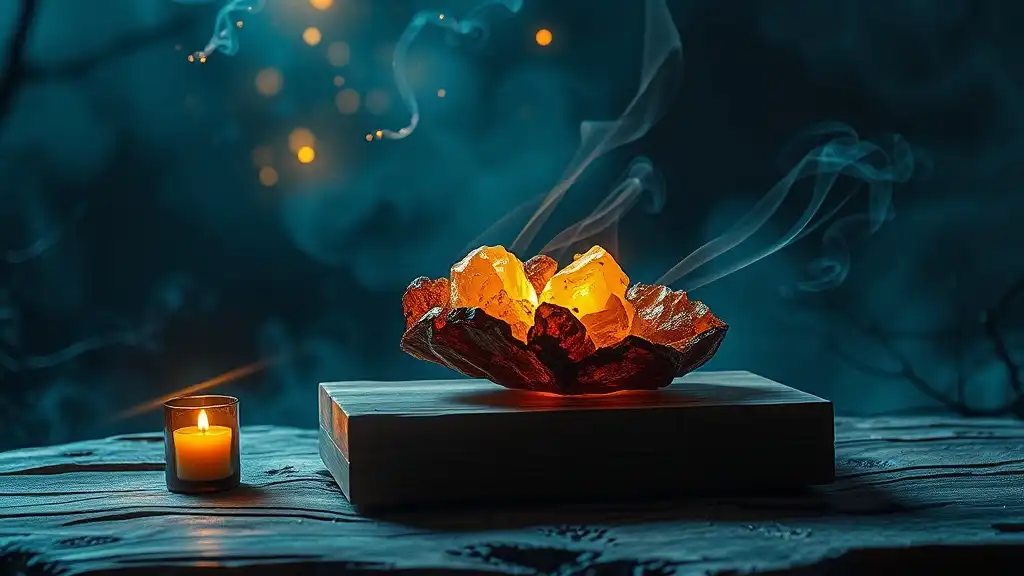Frankincense and myrrh are two of the most cherished substances in spiritual and religious contexts, known for their rich history and profound meaning. These ancient resins have been utilized for thousands of years, not only for their aromatic properties but also for their spiritual significance across various cultures.
What are Frankincense and Myrrh?
Definition and Origins
Frankincense is a resin obtained from the Boswellia genus of trees, primarily found in regions like the Arabian Peninsula, Africa, and India. It is often recognized for its warm, uplifting aroma that has been used in incense and essential oils.
Myrrh, derived from the Commiphora genus, also comes from the resin of trees, typically sourced from East Africa and the Arabian Peninsula. Myrrh has a slightly bitter taste and a distinct, earthy scent that has long been valued for both culinary and medicinal uses.
Traditional Uses
Historically, frankincense and myrrh played pivotal roles in various ancient civilizations. In Egypt, these resins were used in embalming practices, signaling their importance in the afterlife's journey.
In Greece, they were used in religious ceremonies to invoke favor from the gods, and in Chinese medicine, they were revered for their healing properties. Both substances were frequently traded along ancient trade routes, outlining their significance not just as spiritual offerings but also as valuable commodities.

Spiritual Significance
Symbolism of Frankincense
Frankincense is often associated with purification and spiritual cleansing. Its smoke is believed to carry prayers and intentions to the divine. This connection is evident in many religious rituals where frankincense is burned to create a sacred atmosphere, helping practitioners enter a meditative or prayerful state.
The symbolism of frankincense extends beyond its aromatic qualities. It represents divine presence and is seen as a bridge between the material world and the spiritual realm. When engaging with frankincense, individuals may find themselves feeling a deeper connection to their spirituality and a heightened sense of awareness.
Symbolism of Myrrh
Myrrh carries its own unique significance, primarily tied to healing and protection. In many traditions, myrrh is utilized as a sacred oil or incense, believed to foster emotional healing and relief from spiritual burdens. The ancient Egyptians revered myrrh for its antiseptic properties and incorporated it into their embalming rituals, emphasizing its ties to transition and the cycle of life and death.
The symbolism of myrrh aligns closely with themes of compassion and nurturing. When individuals work with myrrh, they often seek to find solace in their spiritual journey and comfort during challenging times.

The Role in Spiritual Practices
Frankincense in Meditation and Prayer
Using frankincense in meditation and prayer can enhance the experience of spiritual practices. When burned, its fragrant smoke encourages a serene and contemplative mind. Practitioners might find that the warm, inviting aroma helps to clear mental clutter, allowing for deeper focus and connection to the divine.
To incorporate frankincense into your practice, consider using pure essential oils or high-quality incense. Start by creating a peaceful setting, lighting the incense, and allowing its fragrance to fill the space. This can significantly enhance the intentionality behind your prayers or meditations, fostering a serene environment that invites spiritual connection and guidance.
Myrrh in Healing Practices
Myrrh's role in healing practices is equally profound. Its essential oil can be applied in various ways to nurture both physical and emotional well-being. Many spiritual practitioners choose myrrh for its protective qualities, believing that it wards off negative energies while promoting inner peace.
Applying diluted myrrh essential oil topically, or using it in diffusers, are effective ways to harness its benefits. Additionally, combining myrrh with other essential oils—such as sandalwood or lavender—can amplify its healing properties, creating a powerful blend that supports emotional balance and spiritual health.

Frankincense and Myrrh in Religious Texts
Biblical References
Frankincense and myrrh are prominently referenced in biblical texts, particularly in the Old Testament and the New Testament. Notably, they were presented as gifts to the newborn Jesus by the Wise Men, symbolizing honor and reverence. This act highlighted frankincense’s connection to divinity and myrrh’s relationship with mortality.
These gifts reinforce the spiritual significance of both substances, illustrating their role in honoring profound moments in the sacred narrative. Their continued reverence in Christianity and other religions speaks to their timeless importance.
Influence in Other Religions
Beyond Christianity, frankincense and myrrh find their place in countless religious traditions. In Hinduism, both are used in rituals to purify spaces and invoke the presence of deities. Similarly, in Buddhism, incense offerings often include these resins to mark respect and devotion.
Indigenous cultures across the globe have also utilized frankincense and myrrh in their spiritual ceremonies, emphasizing their universality in enhancing the sacred aspects of life.

How to Incorporate Frankincense and Myrrh into Daily Life
Essential Oil Applications
Incorporating frankincense and myrrh essential oils into your daily wellness routine can be a transformative practice. Here are some suggestions:
- Diffusion: Use a diffuser to disperse their aromas throughout your living space, creating an uplifting atmosphere.
- Topical Use: Dilute essential oils with a carrier oil and apply to pulse points, or use in massage for relaxation.
- Skin Care: Both oils offer benefits for skin health. Look for products that contain these resins to promote nourishment and healing.
Creating Sacred Spaces
Consider designing a sacred space in your home where frankincense and myrrh can enhance your spiritual practices. Here are some ideas:
- Altar Setup: Create an altar with meaningful items, including frankincense and myrrh, to honor their spiritual significance.
- Ritual Practices: Establish a ritual of lighting frankincense during meditation or prayer to invite peace and clarity into your practice.

Conclusion
In conclusion, frankincense and myrrh serve as powerful symbols of spirituality, healing, and connection throughout history and across cultures. Their rich aromas, coupled with their profound meanings, offer individuals a pathway to explore their spiritual practices deeply. By integrating these ancient resins into daily life, one can invite a sense of calm, purpose, and divine connection that transcends the ordinary. Embrace the journey and allow frankincense and myrrh to guide you along your spiritual path.














